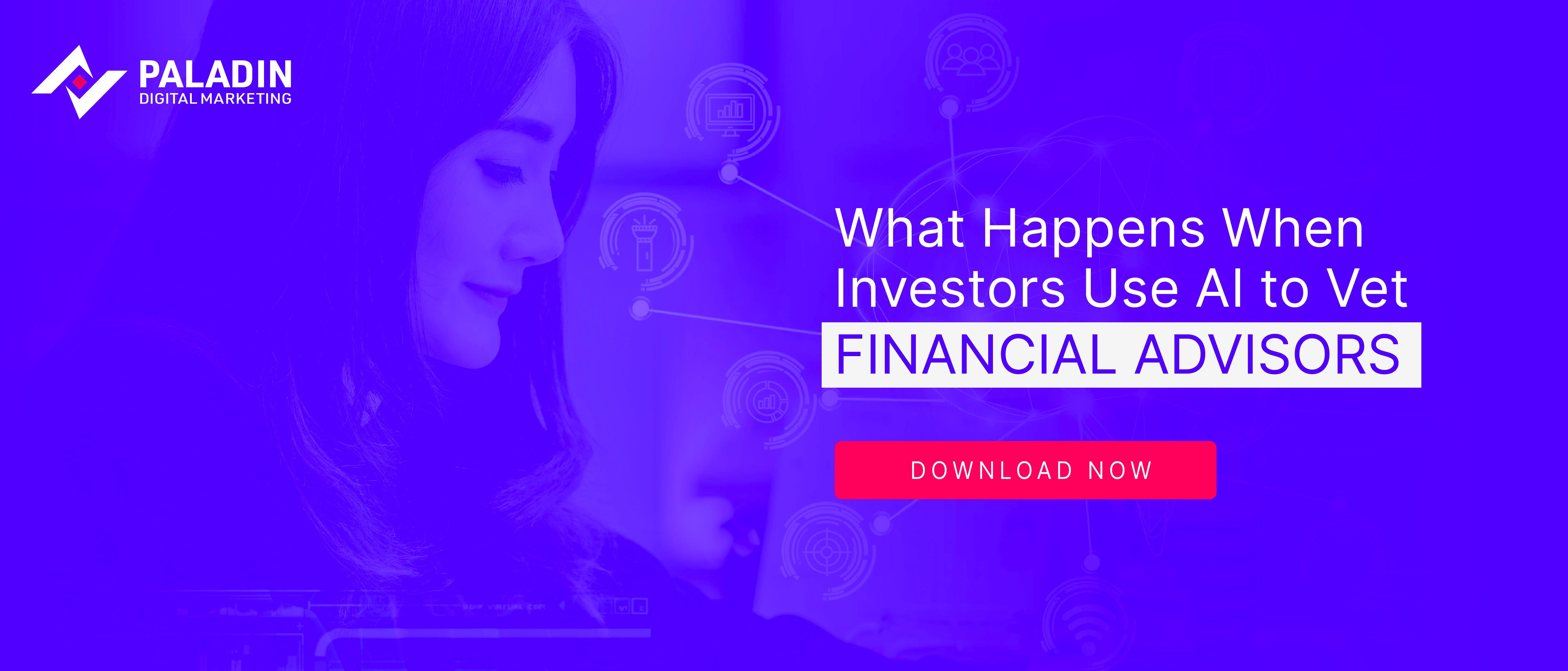

Financial Advisor Digital Marketing Trends for 2025 (So Far...)
2025 is well underway, and here’s hoping it’s been good to your financial advisory firm so far. But no matter how the year started for you, it’s time to keep looking down the road for what’s next in digital marketing, and how it can benefit your financial advisor content’s visibility and effectiveness.
Get the right financial advisor marketing strategy! Connect with Paladin Digital Marketing today!
While the term “trend” can often be synonymous with “new,” it’s not always the case. And in some instances, the trend may simply be a variation of an existing trend. A trend can be an entirely new digital channel or social platform, or it could be a way of utilizing an existing digital marketing channel or practice.
But how can financial advisors keep up with the latest digital marketing trends? And from there, which trends should you prioritize as part of your overall financial advisor digital marketing strategy? To answer these questions, let’s look at some examples of digital marketing trends for 2025.
Artificial Intelligence (AI)
Artificial intelligence is — without question — the hottest trend and most used buzzword in digital marketing in 2025. And while Hollywood has villainized AI at times, insinuating that the world will be dominated by robots, the daily applications of AI are much less sensational. The term “artificial intelligence” is an overarching term for many types of machine-based learning applications, including chatbots, phone voice assistants, and even smart speakers used in millions of homes.
In terms of digital marketing, AI is a game-changer. For financial advisory firms looking to work smarter, adopting AI is a must. AI-based digital marketing efforts can not only save time but can also yield more effective results through the power of personalization and predictive analytics. AI platforms can analyze the behavior and demographics of a target audience and deliver content that is relevant to them. This experience can build trust with that audience, providing an excellent user experience and making them more likely to come back.
Social Media For Financial Advisors
Perhaps associated most with trends, as in trending content, social media as a digital marketing channel is also a 2025 trend. Once considered for personal entertainment and communication only, social media has proven its viability as a digital marketing powerhouse.
For financial advisor digital marketing, the most valuable social media platforms in 2025 are Facebook, X (formerly Twitter), LinkedIn, YouTube, and TikTok. And while each channel has its own niche, they can all get your financial advisor digital marketing content in front of your desired audience.
Pro Tip: Not Every Trend Is a Fit for Your Financial Advisor Content.
Stay away from ultra-trendy – sometimes trends are fleeting. This can be especially true with social media trends (think: TikTok dances and the like). And while there’s nothing wrong with showing some personality, it must be a fit for your brand, as well as compliance regulations.
If it’s not a good fit, the message, the delivery (or both) could be seen as reaching or trying too hard and can have the opposite of the desired effect. Admittedly, this can be a tough balancing act for financial advisory firms that want to reach the younger consumers engaging most on these platforms.
Omnichannel Marketing
The idea of being all places, at all times, is the spirit of omnichannel marketing, even if it’s not 100% accurate. Omnichannel marketing as a digital marketing trend means providing consistent messaging, branding, and overall experience to your audience across multiple channels.
At the heart of a successful omnichannel digital marketing strategy is a strong financial advisor digital marketing branding strategy. By presenting a unified strategy with consistent, high-quality financial advisor content, you’re not only boosting your financial advisory firm’s online visibility but also its reputation. And this can be beneficial in multiple ways, including boosting SEO and credibility with Google. That said, omnichannel marketing can be a lot to juggle if there isn’t a clear plan made ahead of time. One way to combat this challenge is by creating a content schedule/calendar. This calendar can serve as a guide for all digital marketing efforts that overlap, ensuring the campaigns are consistent, timely, and relevant.
Marketing Automation
Along the lines of a work smarter, not harder approach, marketing automation is also a digital marketing trend financial advisors should be utilizing in 2025. Automation software allows for digital marketing campaigns – typically email - to be set up once, and run according to a schedule based on timing, or based on user actions. These campaign types can be used for moving prospects through the sales funnel in the form of trigger campaigns or even onboarding new clients or customers.
However, this convenience comes at a small price in the form of the time it takes to initially set up the campaign parameters and the messaging and content to go along with it. But for busy financial advisors looking to streamline their digital marketing efforts, it’s a worthwhile effort. A note on automation: while these campaigns are automated and can run on their own, they still need to be monitored and measured to perform optimally.
Also, not all digital marketing automation software is created equal. Finding the right platform for your financial advisory firm’s automation needs now, as well as in the future, is a great way to prevent growing pains down the road.
Referral Marketing
In the financial services industry, referrals have always been vital to any firm’s growth. And while the ways to get referrals have evolved from face-to-face to screen-to-screen, it doesn’t make the referral any less important. Because no matter how technology evolves, who people trust with their finances and future goals will always be an important decision.
So, what does referral marketing look like as a digital marketing trend for 2025? It integrates the same basic principles of reaching out to your most established clients, while also utilizing advancements in technology to help identify those clients and get them to spread the word online, not just in person.

Debbie Freeman
Search Here
Categories
- AI (18)
- blogging (2)
- branding (1)
- content (12)
- custodians (1)
- Digital (535)
- email marketing (3)
- fcmo (3)
- fees (1)
- financial advisor marketing (66)
- Google (3)
- Ideas & Tips (125)
- Investor Experience (7)
- lead generation (7)
- linkedin (1)
- Marketing (605)
- newsletters (1)
- Online Transparency (2)
- podcasting (1)
- search engine optimization (4)
- seo (9)
- Social Media (2)
- video (3)
- Websites (172)
- YouTube channel (2)
Recent Posts
-
 October 22, 2025
October 22, 2025 -

-

Top 10 Business Challenges for Smaller Financial Advisor Firms
October 16, 2025 -

How Financial Advisors Use AI to Optimize Website Compliance
October 14, 2025 -

AI Blogging On Your Financial Advisor Website
October 10, 2025

